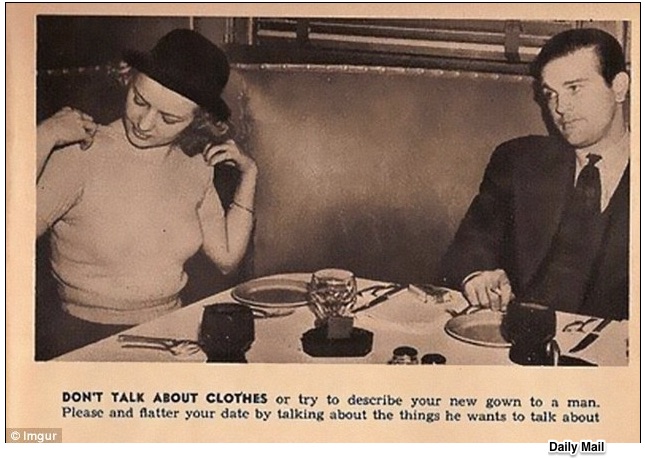When the check comes at the end of a first date, so too might “the reach.”
The reach comes from a hand that slightly extends toward a recently arrived bill for dinner or just coffee. It could be a genuine reach for the tab. Or, it could be a move that is supposed to evoke a similar but more aggressive response from one’s date.
Anecdotal evidence indicates that the response to the reach has changed. Several years ago, everyone assumed the man would get the bill. More recently, we are not sure.
Traditional Dating Norms
We could look back to 1900 or so for the origins of dating norms. Then, approximately 55 percent of all women worked outside the home. Living in boardinghouses or with relatives, employed women were in factories, department stores and offices, or at home as servants. The first to have the opportunity to meet men during and after work, these poorly paid women were able to get a hot meal and maybe some fun at a dance hall during a date.
As for middle class young women, it took until the 1940s for the typical high school date. When the males paid for the root beer floats, the flowers, and movie tickets, they were signaling the dominance and chivalry of a future breadwinner.
A 1938 dating guide in Click Parade Magazine advised women how to behave:
New Dating Norms
Fast forwarding to 2024, we have a NY Times reporter splitting the dinner bill with a woman he met through a dating app. His companion, however, said dinners need not be an equal activity because women spent more on reproductive care and took home smaller paychecks. Her response reflects the ambivalence we now feel about traditional dating norms.
The data from a 2016 survey indicated that 90 percent of the time, among the 552 heterosexual college students that participated, the men paid. They split the check only eight percent of the time while the women, at two percent, almost never paid for a date. Even on subsequent dates, sharing the check more frequently, study participants said the alternative was the men paying.
Meanwhile, in a 2015 paper, “Who Pays for the Date,” 17,607 survey respondents conveyed conflicting opinions. The one definitive conclusion was that men still pay more. Deciding who should pay, though, was a different story:
- Close to 40% of the women in the survey said they expected a man to pay.
- However, 40% also said they were troubled when men did not accept their money.
- Further blurring the results, 76% of the men said they were bothered when accepting a women’s money.
- And yet 44% said they would stop dating a woman who did not contribute.
Papers from seven and eight years ago might not reflect recent changes. Like slow moving tektonic plates, women’s power is slowly shifting. As economists Justin Wolfers and Betsey Stevenson have pointed out, increasingly, marriages are about companionship rather than children. Instead of production complementarities (men at work, women at home), we have the consumption complementarities that could change our dating norms.
Our Bottom Line: Spillover
However, for now, I am concerned when I see a psychologist connecting dating norms to hostile and benevolent sexism. According to the advocates of hostile sexism, men are superior to women while the benevolent version expresses men’s protective role. Both though trumpet male superiority. I suggest that as long as we expect men to pay for a date, the spillover is sexism.
And, the results of “the reach” might be more insidious than we realize.
My sources and more: This NY Times article reminded me it was time to return to dating norms. While in the past, we have cited this WSJ article on “the reach,” for the data, two papers, here and here, were ideal. (Please note that today we’ve quoted several sections from previous econlife posts.)
Related
Publisher: Source link












